Nothing phone (1) vs Google Pixel 6a: Which is better?
Which mid-range smartphone is the best?

Summer is usually a good season for budget phones and we’ve been blessed with two very interesting Android options. The Google Pixel 6a is a continuation of the budget Pixel family that brings the best of Google into an affordable smartphone.
On the other hand, the Nothing phone (1) is the second consumer gadget from the Carl Pei-fronted company that aims to rip up the rulebook on what you expect from tech through sleek, unique product design.
Both are similarly specced (on paper) and cost the same, but which one is worth your money?
| Header Cell - Column 0 | Nothing phone (1) | Pixel 6a |
|---|---|---|
| Price | £399 | £399 |
| Display | 6.55 inches, 2400 x 1080, OLED display 120Hz | 6.1-inch, 2400 x 1080, OLED 60 Hz |
| CPU | Snapdragon 778G+ | Google Tensor |
| RAM | 8GB | 6GB |
| Storage | Starts at 128GB | Starts at 128GB |
| Selfie camera | 16MP | 8MP |
| Rear cameras | 50MP wide, 50MP ultrawide | 12.2MP wide, 12MP ultrawide |
| Battery size | 4,500 mAh | 4,410 mAh |
| Colors | White, Black | Chalk, Charcoal, Sage |
| Dimensions | 6.27 x 2.98 x 0.33 inches | 5.9 x 2.83 x 0.35 inches |
| Weight | 6.8 ounces | 6.28 ounces |
Nothing phone (1) vs Google Pixel 6a: Price and value
Since the Nothing phone (1) is not officially available in the US, we’ll compare pricing in the UK.This phone comes in three configurations:
The Google Pixel 6a, on the other hand, comes in one configuration (6GB RAM and 128GB of storage) for $449/£399. Of course, we can pick specs apart here and say the Nothing phone (1) gives you more bang for your buck in terms of RAM.
But of course, a phone is more than its chipset, so this is a tie.
Winner: Draw
Sign up to receive The Snapshot, a free special dispatch from Laptop Mag, in your inbox.
Nothing phone (1) vs Google Pixel 6a: Design
For dimensions, the Pixel 6a is certainly the more pocketable phone, but with that, you get a smaller display and we’ll cover that later.
Looking beyond size, let’s get into the aesthetics and materials. In these categories, for me, Nothing phone (1) wins easily, but the design is divisive.
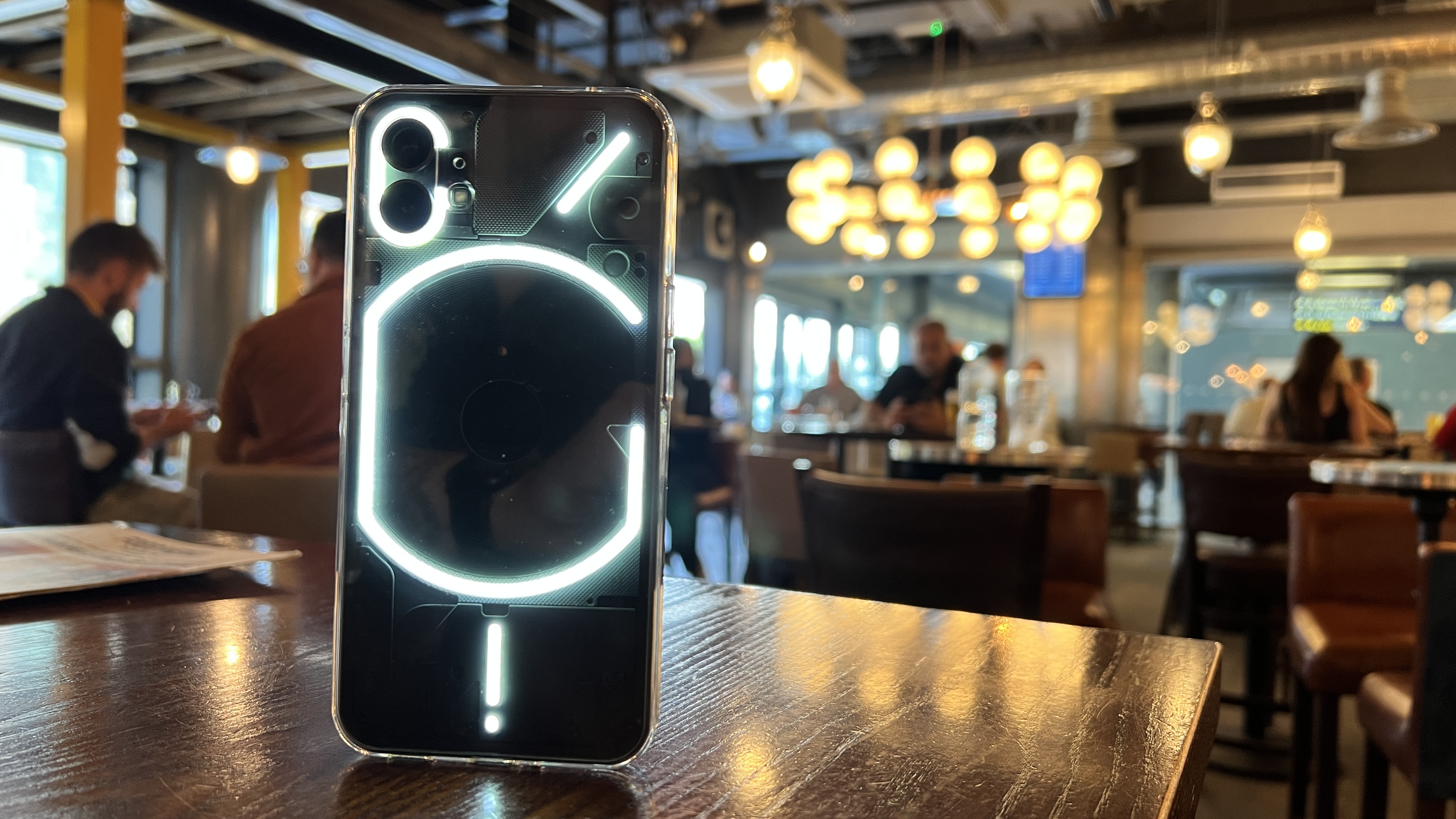
I personally love the retro futurism of it all — the transparent back showing off the internals of the phone, the unique Glyph light interface and the subtle dot matrix signature of the brand’s logo. However, when showing this to my not-so-nerdy friends, they viewed it as just a strange bit of over-engineering.
Plus, the use of Gorilla Glass and aluminum for the construction gives this a nice, premium feel that you just don’t get from the Pixel 6a’s plastic back.
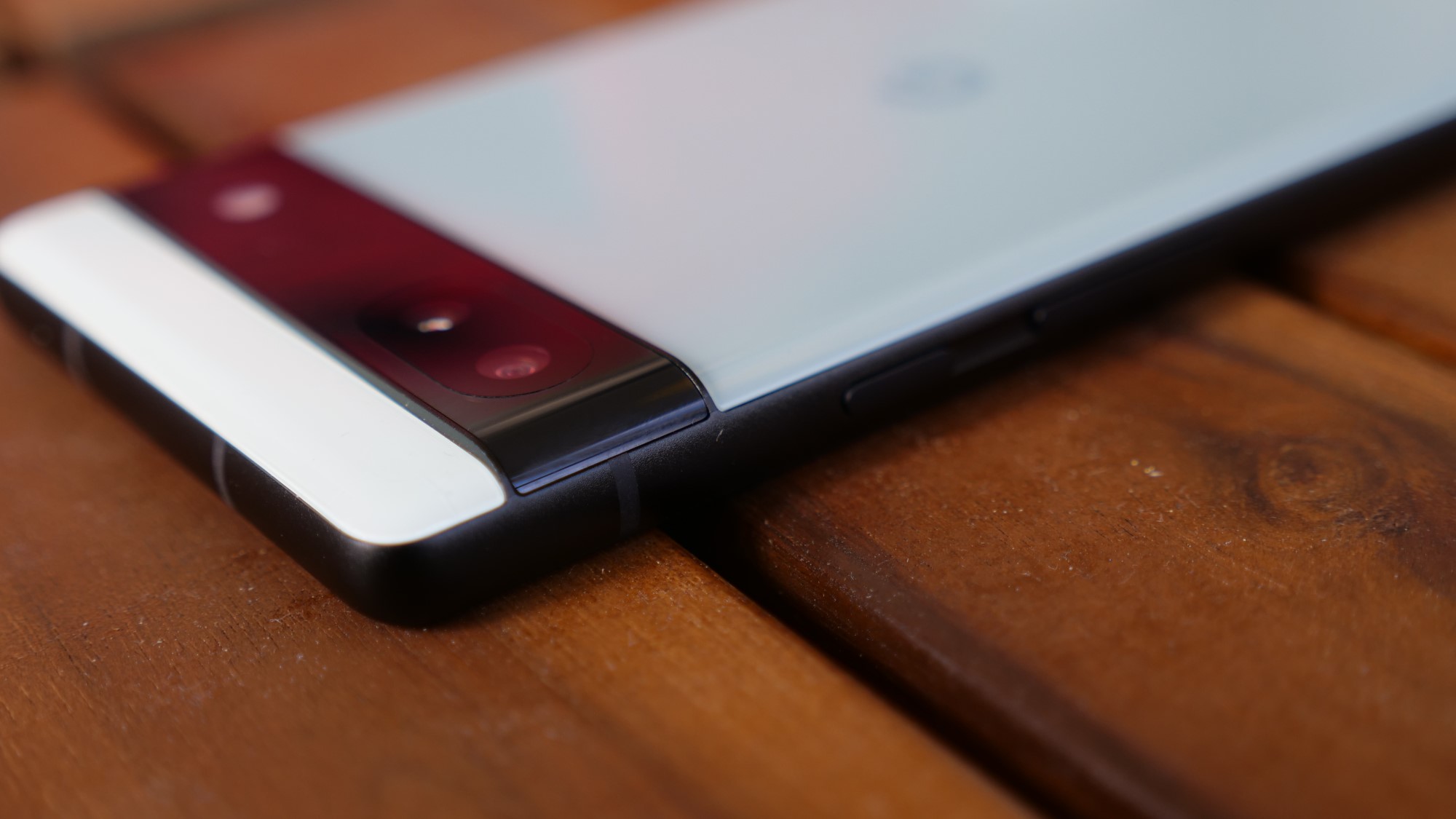
Speaking of, the two-tone color split above and below the camera array adds a dash of flair to the back of the 6a — closely copying the dramatic redesign we saw in the original Pixel 6.
The front and sides could be mistaken for any mid-tier Android phone with a hole-punch camera centered at the top of the flat display and gently rounded edges that make the phone comfortable to hold.
Nothing seems to have gone in a different, more iPhone-esque direction with its aluminum edge, and the flat front and back. That, to me, feels nicer in the hand and in terms of eye-catching design, the phone (1) has a lot more going for it.
Winner: Nothing phone (1)
Nothing phone (1) vs Google Pixel 6a: Display
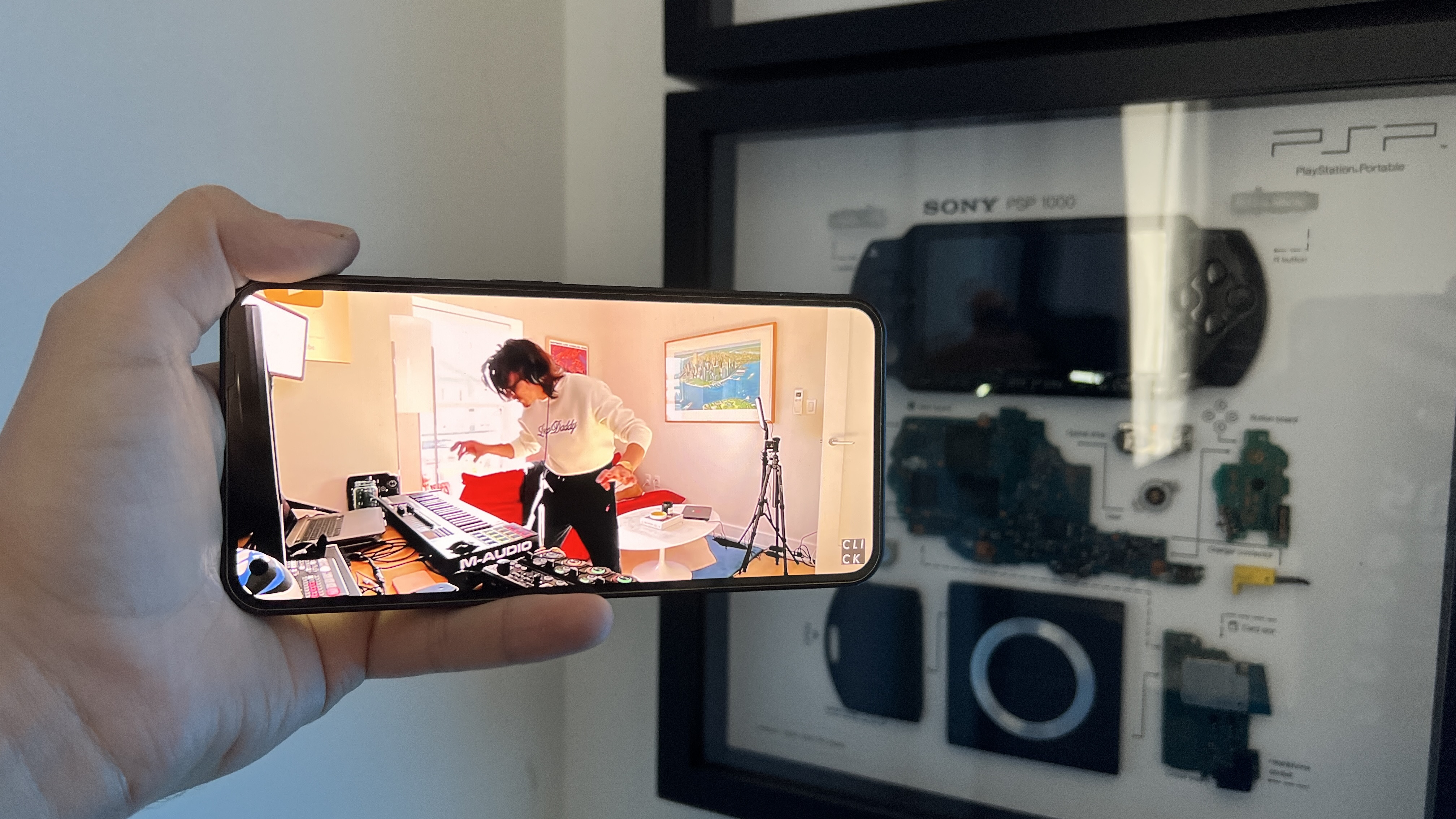
I’ll just say it. Nothing phone (1) wins by quite a margin when it comes to the display.
In the phone (1), you’re getting a 6.55-inch OLED screen with 10-bit color depth, HDR10+, a 2400 x 1080-pixel resolution, 458 nits of brightness, and a 120Hz refresh rate. It’s a gorgeous, smooth panel with plenty of color and an impressive contrast ratio.
Plus, since Nothing opted to use a foldable OLED panel, the company is able to fold the connectors behind the display, which leads to the symmetrical slim borders around the display.
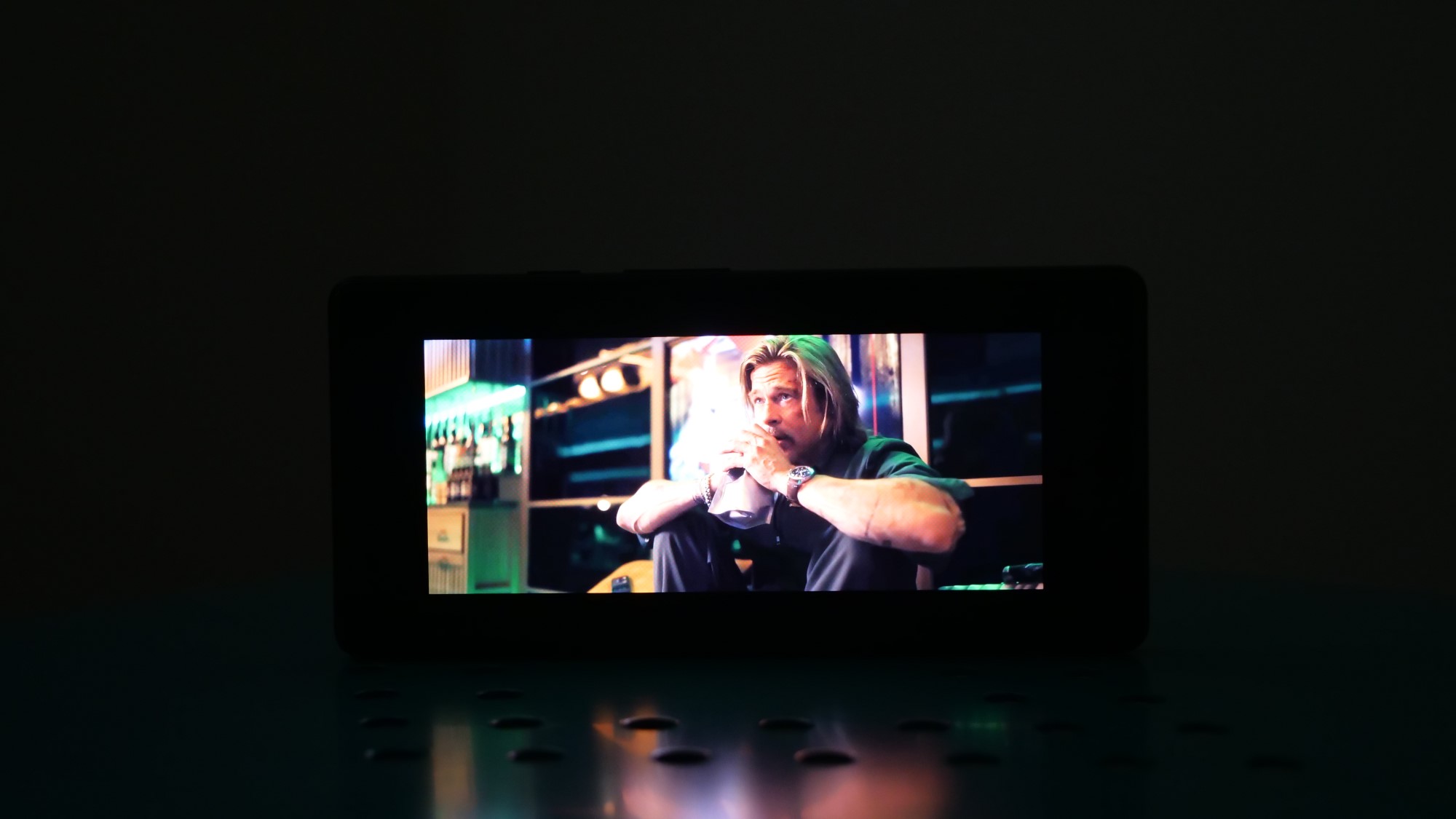
In the Pixel 6a, with slightly thicker bezels to accommodate the wiring, the specs seem to suggest it would be good: a 6.1-inch, FHD+ (2400 x 1080 pixel) OLED display with HDR support, a high brightness mode, over a million-to-one contrast ratio, and full 24-bit depth for 16 million colors.
In reality, it is as bright and colorful as the Nothing phone (1), but one spec is its downfall: a 60Hz refresh rate. Going back to this slower rate is so noticeable and with many of the best budget phones offering more, this seems like unnecessary cost cutting.
Winner: Nothing phone (1)
Nothing phone (1) vs Google Pixel 6a: Performance
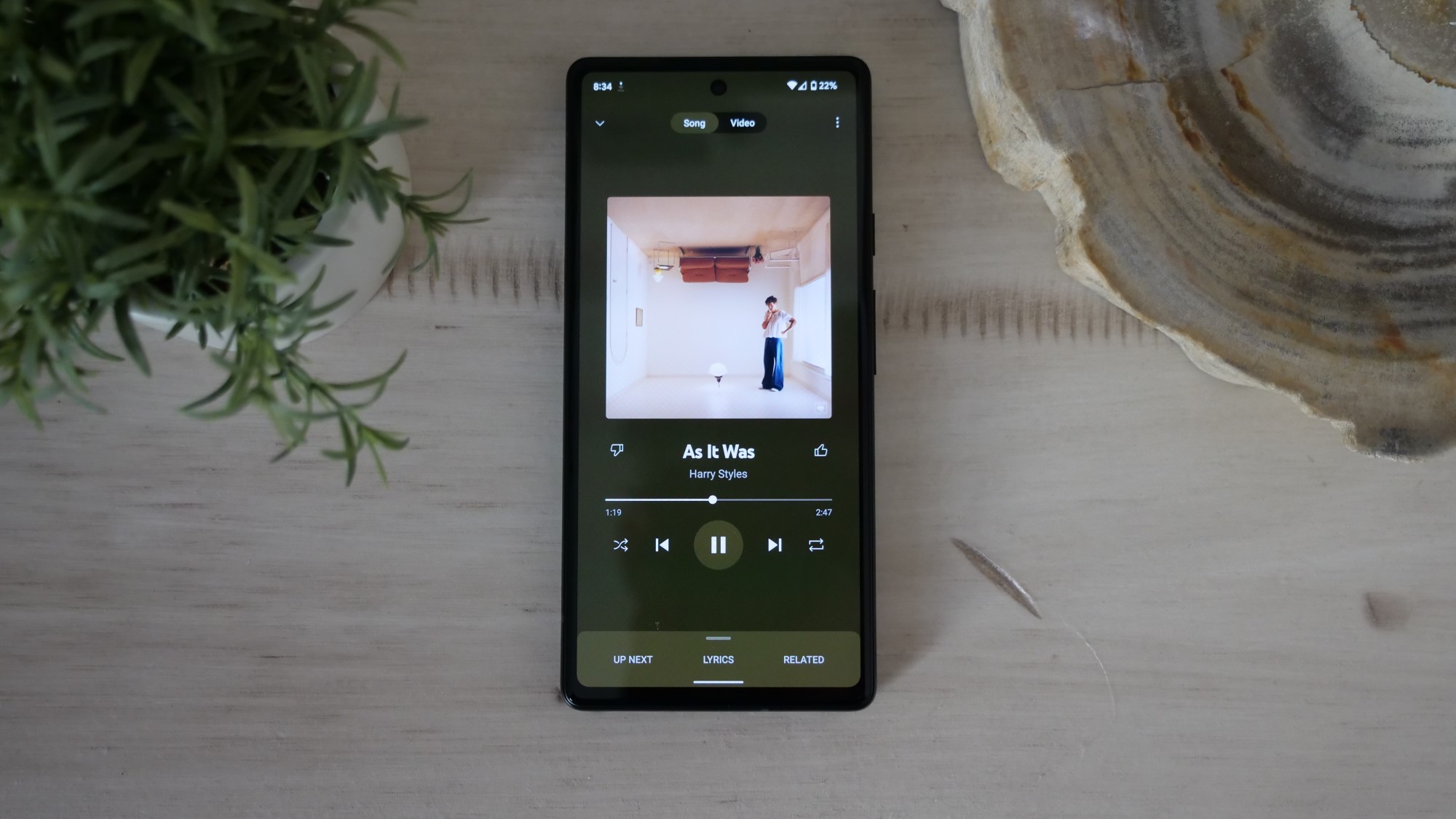
The Google Pixel 6a takes the Tensor chip from its flagship sibling, which always seems to look like it’s underperforming in Geekbench testing (2,918 multi-core) compared to the 3,000 of Nothing phone (1), but it's a very different kind of chip that pumps out stellar performance in most use cases.
Our typical review gauntlet for phones includes loading a few dozen Google Chrome tabs, running a Netflix video in the background, and then swapping between several other apps including Twitter, YouTube Music, and Gmail.
The Pixel 6a had no issues with this workload and I could quickly switch between tabs and apps without any stuttering in the operating system or video. Plus, it’s great for graphics-intensive tasks like gaming and making video edits. We saw no stuttering while playing Call of Duty: Mobile

On the other hand, the Snapdragon 778+ 5G chipset in the Nothing phone (1) makes it a good phone for a rather limited set of tasks. You won’t come across any hitches when you abide by Nothing’s vision for the phone — namely, casual gaming and normal app usage with some light multitasking.
Once you start to really push it with Call of Duty: Mobile and more processor-intensive apps like Photoshop Express or Premiere Rush video editor, that’s when you start to see the cracks. The UI starts to slow down and input lag becomes apparent.
It’s a fascinating battle, as if you went by the numbers, there’s not actually that much between them. But through real world performance, you’re able to see just how benchmarks only tell half the story.
Winner: Google Pixel 6a
Nothing phone (1) vs Google Pixel 6a: Battery life
The 4,410mAh battery in the Google Pixel 6a is a tad smaller than the 4,500mAh cell in the Nothing phone (1), but the software appears to make Google’s phone quite a bit more efficient.
Peak power management of the Tensor chipset meant that we were able to run the Pixel 6a through a typical full day of use (Netflix and YouTube streaming, web browsing, social media, some gaming, photography and video) and get through from 7:30 a.m. to the end of the day with 20% of power.
Meanwhile, Nothing’s bet on an older chipset being better for power consumption isn’t quite true. Waking up at 8 a.m., I went through an entire day to 8 p.m. with the usual work/entertainment (emails, calls, social media, taking some quick pictures, Spotify by day, gaming, and YouTube in my own time) before needing to plug it in with 5% of the battery remaining.
While the Pixel 6a does charge slower than the Nothing phone (1) and lacks wireless charging, stamina will always be more convenient.
Winner: Google Pixel 6a
Nothing phone (1) vs Google Pixel 6a: Software
Power is good, but it's what you do with it that counts.
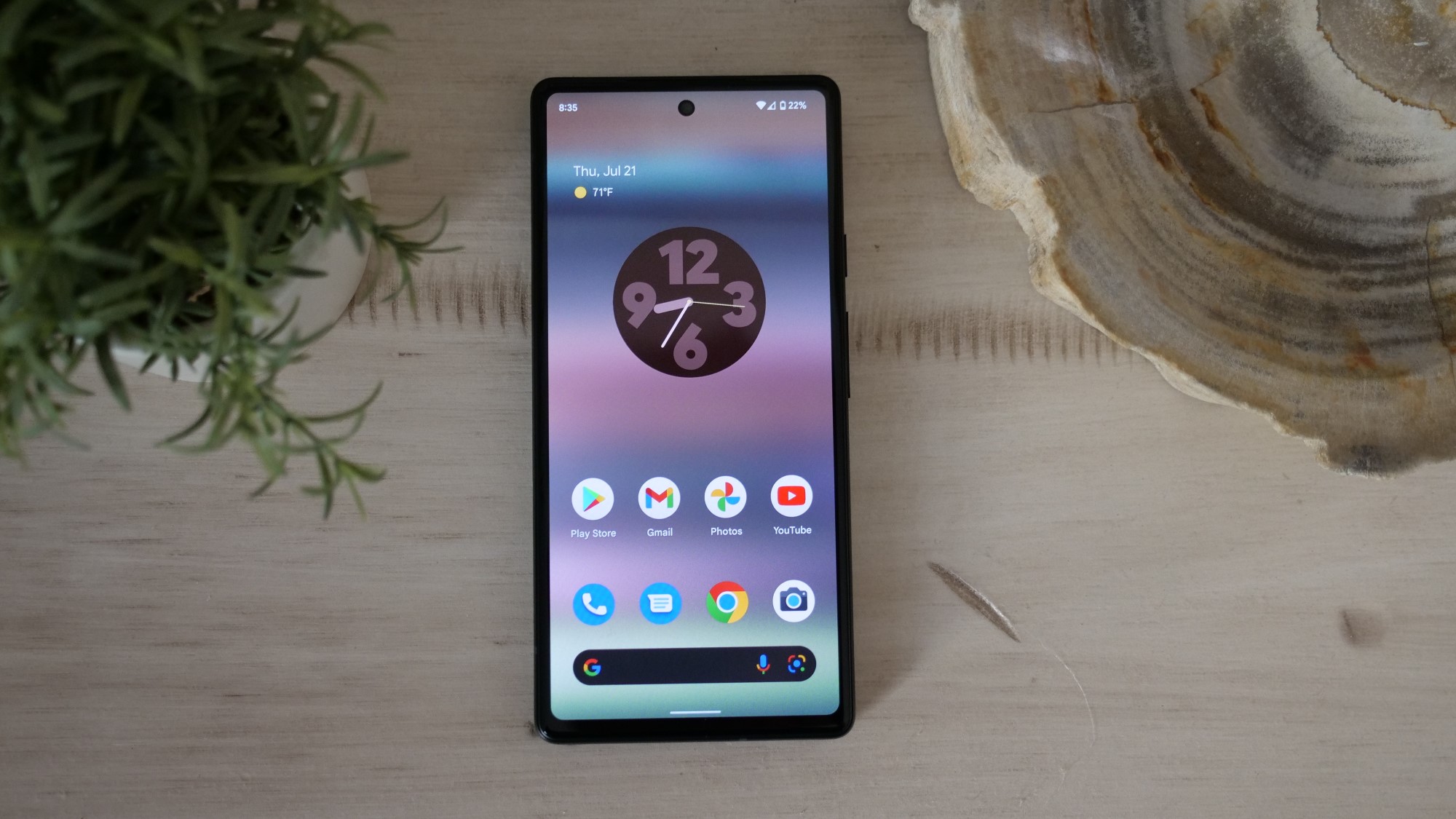
The Pixel 6a runs Google’s slightly modified version of Android 12. While Android 13 is near on the horizon now, and the Pixel 6a will be among the first to get it. We love all of the little UI enhancements Google provides in Material You, alongside its awesome exclusive features like making talking to businesses pain free with Direct my Call and Hold for Me features.
Also, with it being Google, you’ve got a huge advantage in terms of future support: five years of security updates and three years of major OS updates.

Nothing OS over the top of Android 12 takes a different approach to many mid-range Android blowers by giving you a pretty clean OS with a smattering of features, a whole lot of attention to animation that gives this an iOS-esque fluidity and motion, along with that dot matrix typography and interestingly reskinned apps like the voice recorder and an expanded settings area on the pull down notification shade.
But through the company’s drive to simplify, there are some missing items that I’d really love to see make its way back onto here, including a lack of original widgets and some settings that are just a few taps too far away.
Given it’s a first-generation OS, there are some stability issues — namely in some of the quick settings and fluidity across certain sections. As for the future, Nothing has committed to three years of OS updates and four years of security updates, which leaves a lot of time for the team to smooth out any wrinkles, but that still falls behind Google’s commitment.
Winner: Google Pixel 6a
Nothing phone (1) vs Google Pixel 6a: Cameras
To paraphrase Men in Black, this is “old and busted” vs “new hotness,” but the old isn’t actually busted and is still a fantastic smartphone camera.
The Pixel 6a relies on the same camera tech Google has used since the Pixel 3: a 12.2MP wide-angle at f/1.7 and a 12MP ultrawide at f/2.2. Flipping around to the front, you get an 8MP at f/2.0.



Of course, the beauty of Google Pixel photography comes with the magic that its software is capable of producing. The colors and detail in the photos are still excellent from both the wide and ultrawide lenses.
Each camera is able to extract plenty of definition to the smaller elements, while giving you that same contrasty feel that many photographers really like about the Pixel’s expression. This is a cheaper phone with an old sensor, though, and you do see that in the slight noise across night time photography.
As for the Nothing phone (1), you’ll find a dual-camera setup consisting of a 50MP Sony IMX766 main sensor with f/1.88 aperture, alongside a 50MP ultra wide Samsung JN1 sensor with an f/2.2 aperture, and a 114-degree lens.
Up front, there’s a 16MP selfie snapper with an f/2.45 aperture and to sum up this camera system in a few words, the Nothing phone (1) is good enough in most circumstances.

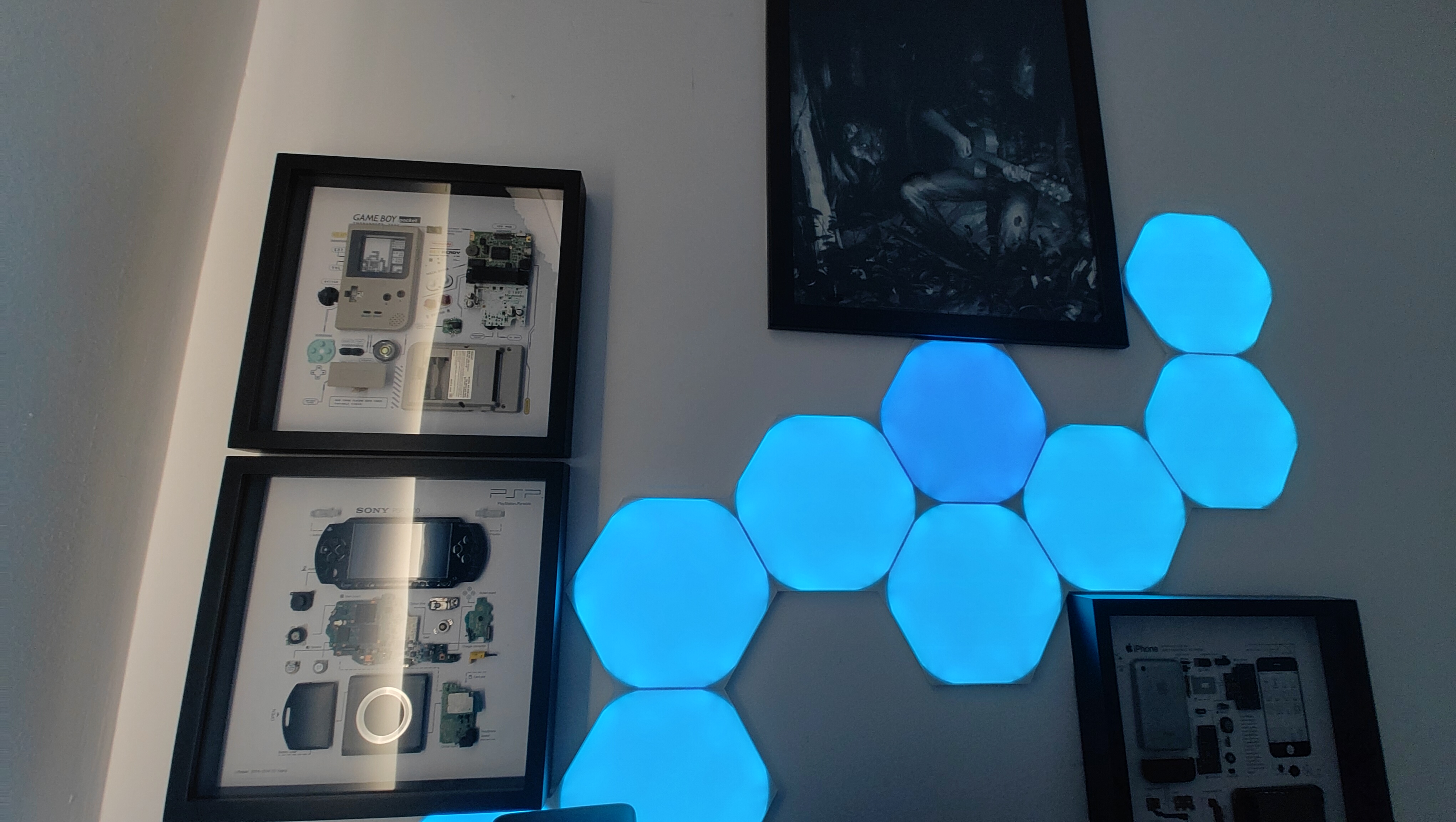
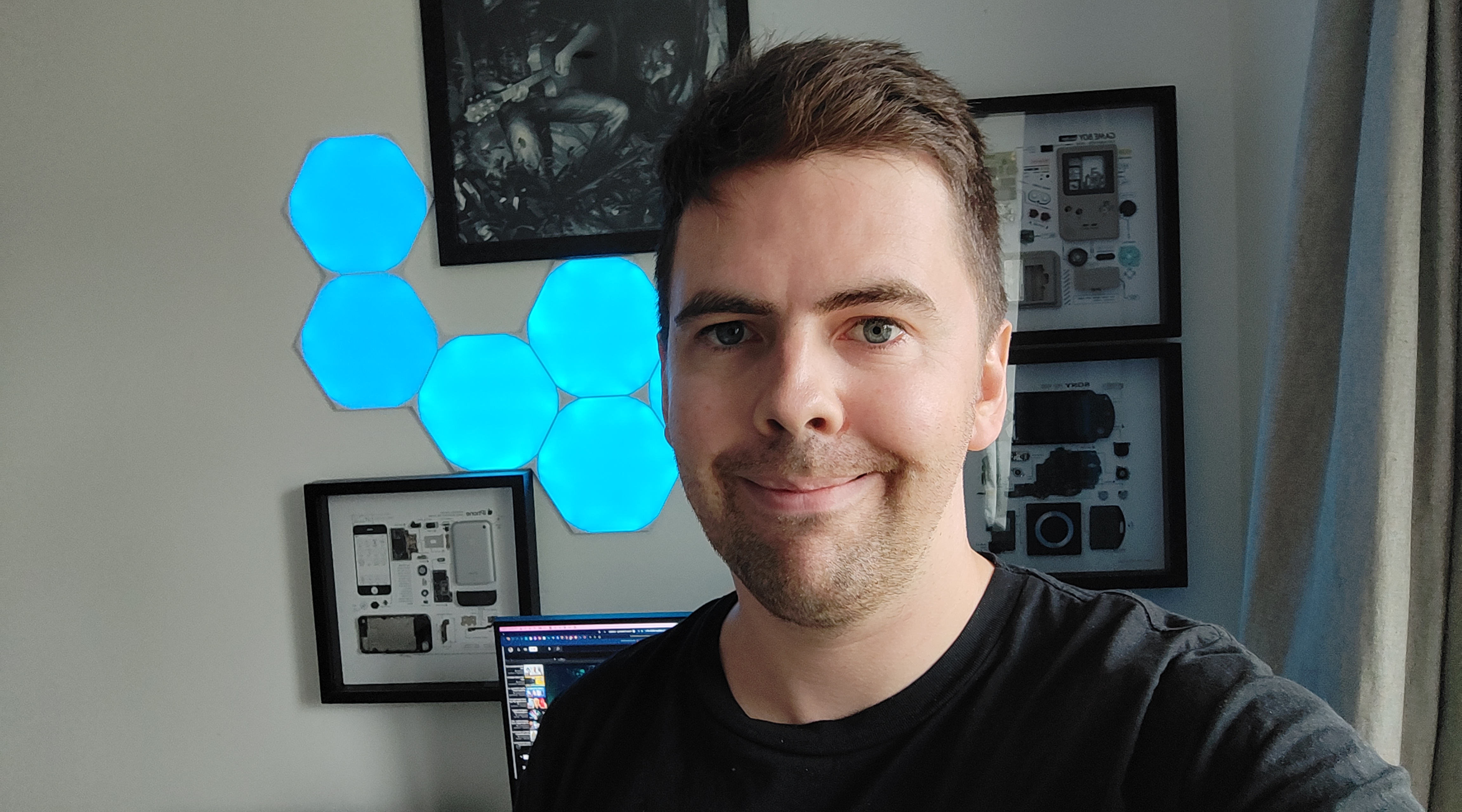
Details are crisp from the main rear camera and the color science offers a nice balanced picture, paired with an expressive contrast that makes each image pretty punchy in most lighting conditions.
Unlike the Pixel 6a, there does seem to be a lack of post-processing of evening pictures though, which leads to a loss of detail and a fair bit of ISO noise when the sun goes down.
That (much like any other phone company) is something that is eliminated with time and experience. The more Nothing learns, the more it can apply into future phones. But we’re not talking about the future and right now, the Pixel 6a is the superior budget snapper.
Winner: Google Pixel 6a
Nothing phone (1) vs Google Pixel 6a: Which should you buy?

The Nothing phone (1) and Google Pixel 6a have traded a lot of blows in this bout, but once the dust settled, it was the Pixel 6a that was left with its hand held high in victory.
Nothing came so close to hitting an early knock out with its stand out design, superior display, and wireless charging.You could argue that some of these wins are indicative of Google resting on its laurels a little bit in its “a” lineage of phones.
However, the tried and tested Pixel camera system reigns supreme.The stronger processor, improved Google-centric software experience, and better battery life helped the Pixel 6a take the win here.
There are still reasons to check out the phone (1), and if your primary concerns in making a buying decision are solely focussed around what it excels in, then you’ll love it. But for most of you, your money will be best spent on the Google Pixel 6a.
Winner: Google Pixel 6a

Jason brought a decade of tech and gaming journalism experience to his role as a writer at Laptop Mag, and he is now the Managing Editor of Computing at Tom's Guide. He takes a particular interest in writing articles and creating videos about laptops, headphones and games. He has previously written for Kotaku, Stuff and BBC Science Focus. In his spare time, you'll find Jason looking for good dogs to pet or thinking about eating pizza if he isn't already.
